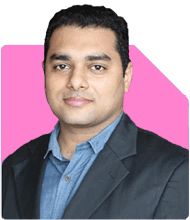Repay Home Loan Early or Continue SIP? A 31-Year-Old's Dilemma
Ramalingam Kalirajan |10923 Answers |Ask -Follow
Mutual Funds, Financial Planning Expert - Answered on Dec 27, 2024
He has an MBA in finance from the University of Madras and is a certified financial planner.
He is the director and chief financial planner at Holistic Investment, a Chennai-based firm that offers financial planning and wealth management advice.... more

Hi sir, I am 31 years old, my monthly salary is 70 thousand. I have a existing home loan around 1986000 with ROI 9.25% for 29years. and till now through SIP I have invested 5 Lac and I keep liquid fund 2.5 Lac. My current balance including all SIP and liquid fund 9 Lac. I need a advise from you that I should repay my home with this 9 Lac or I should continue investing as SIP and continue EMI and repay homeloan as 1 or 2 EMI Extra in a year.
Analysing Your Current Financial Situation
Existing Home Loan
Your outstanding home loan of Rs 19.86 lakhs has a tenure of 29 years.
The interest rate is 9.25%, which impacts your long-term cash flow.
The EMI will consume a consistent portion of your salary over the years.
SIP Investments
You have already invested Rs 5 lakhs through SIPs.
Regular investments in SIPs help in wealth accumulation and compounding returns.
Your monthly SIPs are likely aligned with your financial goals.
Liquid Funds
You hold Rs 2.5 lakhs in liquid funds.
This provides a buffer for emergencies or short-term needs.
Options to Consider
Option 1: Use Rs 9 Lakhs to Prepay the Loan
Prepaying the loan can reduce the principal significantly.
This reduces the overall interest burden and loan tenure.
However, this locks your funds into a low-return liability.
Option 2: Continue SIPs and Pay Extra EMIs Annually
Continue your SIP investments for higher long-term returns.
Paying 1–2 extra EMIs yearly can reduce the tenure significantly.
This approach balances wealth creation and liability management.
Option 3: Split Funds Between Prepayment and Investments
Use a portion of Rs 9 lakhs for partial prepayment.
Invest the remaining amount in SIPs or other high-return instruments.
This ensures debt reduction and continued wealth growth.
Evaluating Return on Investment
Home Loan Interest vs SIP Returns
Your home loan interest rate of 9.25% is a guaranteed expense.
Equity SIPs typically yield higher returns, averaging 12–15% annually.
Investing in SIPs could create wealth faster than prepaying the loan.
Tax Benefits on Home Loan
You may claim tax deductions on home loan interest and principal.
Prepaying reduces the tax-saving benefits.
Recommended Approach
Maintain Emergency Liquidity
Retain Rs 2.5 lakhs or more in liquid funds.
This ensures financial stability during unforeseen situations.
Focus on SIP Investments
Continue SIPs to benefit from long-term compounding.
Increase your SIP contributions gradually with salary increments.
Make Partial Prepayments
Use a portion of Rs 9 lakhs for partial prepayment.
Aim to reduce the principal significantly to lower interest outflows.
Pay Extra EMIs
Commit to paying at least 2 extra EMIs annually.
This reduces your loan tenure and interest burden effectively.
Avoid Common Pitfalls
Do Not Over-Allocate to Loan Prepayment
Avoid locking all your funds into loan repayment.
This limits your liquidity and investment potential.
Avoid Real Estate Investments
Real estate involves high costs, illiquidity, and uncertain returns.
Stick to diversified mutual funds or equity investments instead.
Maintain Disciplined Financial Planning
Ensure a balanced approach between debt reduction and wealth creation.
Review your financial goals annually for necessary adjustments.
Final Insights
Your financial journey is off to a great start. Continue with SIP investments to maximise long-term growth. Use surplus funds for partial loan prepayments and extra EMIs to manage your debt efficiently. Balancing both strategies will ensure a secure financial future and help you achieve your goals effectively.
Best Regards,
K. Ramalingam, MBA, CFP,
Chief Financial Planner,
www.holisticinvestment.in
https://www.youtube.com/@HolisticInvestment
You may like to see similar questions and answers below
Ramalingam Kalirajan |10923 Answers |Ask -Follow
Mutual Funds, Financial Planning Expert - Answered on May 24, 2024
Milind Vadjikar | Answer |Ask -Follow
Insurance, Stocks, MF, PF Expert - Answered on Oct 04, 2024
Ramalingam Kalirajan |10923 Answers |Ask -Follow
Mutual Funds, Financial Planning Expert - Answered on Nov 28, 2024
Milind Vadjikar | Answer |Ask -Follow
Insurance, Stocks, MF, PF Expert - Answered on Nov 28, 2024
Radheshyam Zanwar |6752 Answers |Ask -Follow
MHT-CET, IIT-JEE, NEET-UG Expert - Answered on Dec 23, 2025
Ravi Mittal |679 Answers |Ask -Follow
Dating, Relationships Expert - Answered on Dec 22, 2025
Ramalingam Kalirajan |10923 Answers |Ask -Follow
Mutual Funds, Financial Planning Expert - Answered on Dec 22, 2025
Ramalingam Kalirajan |10923 Answers |Ask -Follow
Mutual Funds, Financial Planning Expert - Answered on Dec 22, 2025
Ramalingam Kalirajan |10923 Answers |Ask -Follow
Mutual Funds, Financial Planning Expert - Answered on Dec 22, 2025
Ramalingam Kalirajan |10923 Answers |Ask -Follow
Mutual Funds, Financial Planning Expert - Answered on Dec 22, 2025
Ramalingam Kalirajan |10923 Answers |Ask -Follow
Mutual Funds, Financial Planning Expert - Answered on Dec 22, 2025
Ramalingam Kalirajan |10923 Answers |Ask -Follow
Mutual Funds, Financial Planning Expert - Answered on Dec 22, 2025
Ramalingam Kalirajan |10923 Answers |Ask -Follow
Mutual Funds, Financial Planning Expert - Answered on Dec 22, 2025
Ramalingam Kalirajan |10923 Answers |Ask -Follow
Mutual Funds, Financial Planning Expert - Answered on Dec 22, 2025
























